-
Hezbollah drone represents changing technological landscape for Israel
Israel’s air defenses worked just fine in handling the drone launched by Hezbollah last week: the drone was picked up by Israeli surveillance as it was launched from southern Lebanon, then tracked as it flew south over the Mediterranean; it was allowed to enter Israeli air space so that after it was shot down, its remains could be collected and analyzed; still, the incident made many Israelis sit up and take notice; Israel, a country which has pioneered the use of UAVs as an integral part of military operations and which has held a monopoly on operating drones in the region, was forced to realize that is adversaries, too, now had access to the technology
-
-
Worries about UAV use in both military and domestic missions exaggerated

Dr. Steven P. Bucci, a Senior Fellow for Homeland Security & Defense Issues at the Heritage Foundation, talked with Derek Major, the Homeland Security News Wire’s executive editor, about the growing use of UAVs in both military and domestic law-enforcement missions; Bucci says that in targeting militants, American drone operators exercise a great deal of care to minimize, and eliminate if possible, death and injury to innocent civilians; he also says that the use of drones in domestic law-enforcement missions, if done properly, will not pose Big Brother risks, because drones may make surveillance easier and cheaper, but it will not give law-enforcement agencies any new authorities
-
-
New launch and recovery system for the Scan Eagle UAV
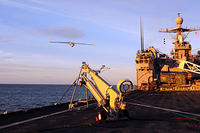
A shipboard-capable system designed to support both the launch and recovery of the Scan Eagle UAV successfully completed final demonstration flight testing on 27 September at a testing range in eastern Oregon
-
-
Fueling UAVs in flight
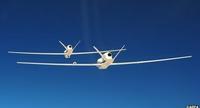
DARPA completes close-proximity flight tests of two modified RQ-4 Global Hawk unmanned aerial vehicles, demonstrating technology enabling autonomous aerial refueling
-
-
Hezbollah drone shot down over Israel
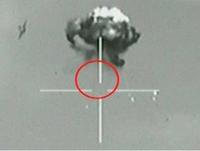
The Israel Air Force (IAF) planes shot down a UAV over the north Negev; the UAV entered Israeli air space from the west, but Israeli intelligence says the drone was launched by Hezbollah in Lebanon, then made its way south over the Mediterranean, then turned east when it reached the water off the Gaza Strip
-
-
U.K. military’s drone spending keep rising
In an effort to boost its military, the United Kingdom, over the past five years, has spent more than two billion euros buying and developing unmanned drones; the U.K. has no intention of slowing down, as it is committed to spending another two billion euros on new unmanned aircraft
-
-
Technology soon to make drones deadlier, more autonomous
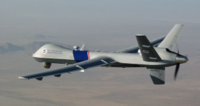
Unmanned aerial vehicles (UAVs) have become America’s main weapon in the campaign against terrorists — at the forefront are the Predator and the Reaper — and technological changes would soon make them even deadlier; in the next decade drones will be faster and carry more weapons than today’s versions; they will also have better sensors and more sophisticated computers, allowing them to plan and execute attacks with little human participation
-
-
More cyber-secure UAVs
The software that runs complex military systems such as UAVs contains tens of thousands of lines of code; this code is designed by human beings, and human beings make mistakes; DARPA wants military systems to be run by fail-safe software, ad for this purpose has created the High-Assurance Cyber Military Systems (HACMS) program; Rockwell Collins has been selected as the prime contractor for the unmanned air vehicle portion of the HACMS
-
-
Apple rejects app which tracks drone strikes against militants
Apple has rejected an app, developed by a New York student, which tracks U.S. drone strikes in Pakistan; Apple said the app violated rule 16.1 of its guidelines, which bans “excessively objectionable or crude content”
-
-
Drones being used to track hurricanes
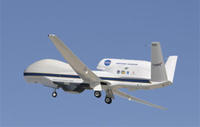
Federal hurricane trackers will start experimenting with unmanned boats and aircrafts to learn more about how to anticipate and track the movements of hurricanes; NASAand the National Oceanic and Atmospheric Administration(NOAA) are teaming up and using a pair of military-surplus Global Hawk spy drones, which are known more for spying on battlefields than chasing storms
-
-
U.S. testing blimps, surveillance towers on Mexican border
Last year, the U.S. government ended SBInet, a major and unsuccessful attempt to build a virtual fence along the border that cost nearly $1 billion before it was killed; DHS is now testing aerostats, and an 80-foot tower with similar surveillance capabilities, for border security as part of an effort to exploit technologies that have been used in the wars in Iraq and Afghanistan
-
-
Do drones increase the likelihood of war by lowering its cost?
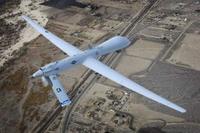
A leading Australian applied ethicist says engineers should stop working on killer robots and kick the habit of military funding; the professor said military robots are making war more likely by lowering the threshold of conflict
-
-
Drone use spreads to more areas and missions
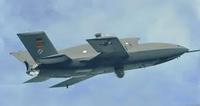
As security challenges in the United State and around the globe change, many countries have one thing in common: unmanned drones will be a significant part of the future of security; advancements in technology are driving the use of UAVs into newareas
-
-
Unmanned civilian drones vulnerable to hijacking
Unmanned drones have become the eyes and ears of the military in recent years, giving them an advantage in intelligence gathering and in operations without risking soldiers’ lives; the drones’ versatility and low price have made them an attractive tool for domestic law enforcement and first response missions; there is one glitch, though: drones can be hijacked; if that happens, these swift, unmanned aircrafts could become weapons for terrorists
-
-
DHS seeks better ways to detect ultra light aircrafts used by smugglers

As the war on drugs continues with every sunrise and sunset, DHS has awarded a contract just short of $100 million for a specialized system which will be able to detect ultralight aircrafts which are used to smuggle drugs across the border
-
- All
- Regional
- Water
- Biometrics
- Borders/Immig
- Business
- Cybersecurity
- Detection
- Disasters
- Government
- Infrastructure
- International
- Public health
- Public Safety
- Communication interoperabillity
- Emergency services
- Emergency medical services
- Fire
- First response
- IEDs
- Law Enforcement
- Law Enforcement Technology
- Military technology
- Nonlethal weapons
- Nuclear weapons
- Personal protection equipment
- Police
- Notification /alert systems
- Situational awareness
- Weapons systems
- Sci-Tech
- Sector Reports
- Surveillance
- Transportation
Advertising & Marketing: advertise@newswirepubs.com
Editorial: editor@newswirepubs.com
General: info@newswirepubs.com
2010-2011 © News Wire Publications, LLC News Wire Publications, LLC
220 Old Country Road | Suite 200 | Mineola | New York | 11501
Permissions and Policies
Editorial: editor@newswirepubs.com
General: info@newswirepubs.com
2010-2011 © News Wire Publications, LLC News Wire Publications, LLC
220 Old Country Road | Suite 200 | Mineola | New York | 11501
Permissions and Policies
